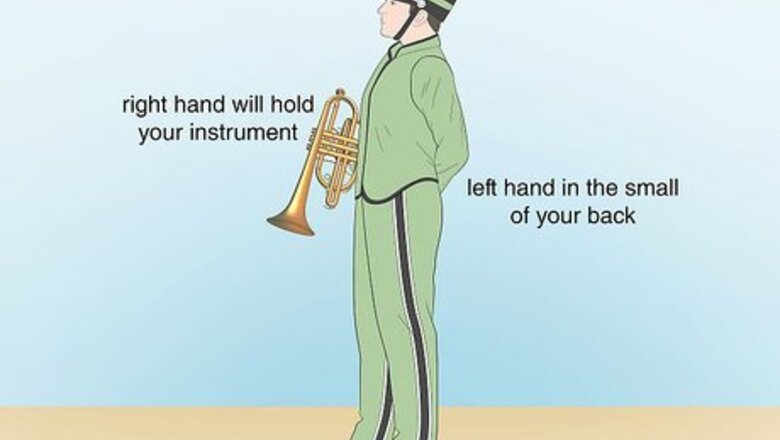
views
Standing in Position
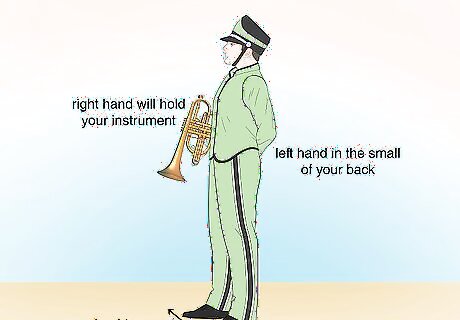
Stand at ease. To stand at ease, you can relax and stand comfortably, but do not talk or move around. Stand with your feet shoulder distance apart. Place your left hand in the small of your back. Your right hand will hold your instrument, unless you are carrying a drum, which will be held in front of you.
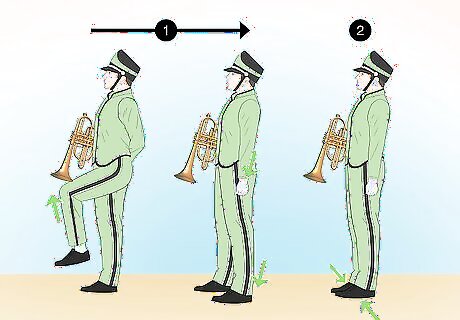
Move to attention. Lift your left leg up and bring it down to the ground on the count of 1. At the same time, bring your left arm from behind your back and place it on your left side. Your thumb will rest on the seam of your pants. On the count of 2, bring your heels together.
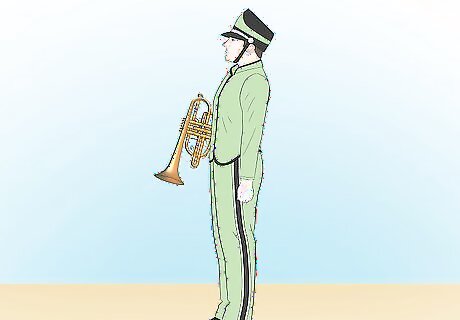
Stand at attention. Keep your heels together and your toes straight out. Straighten your legs, trying not to stiffen your knees. Rest evenly on your heels and balls of your feet. Draw your hips slightly back beneath your shoulders.
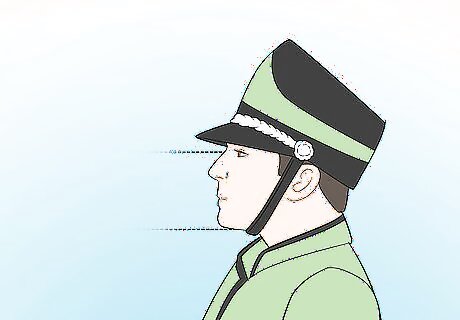
Hold your head up. Stretch your neck out as long as possible without creating tension. Hold your chin level to the field and focus your eyes forward on a distant point in space.
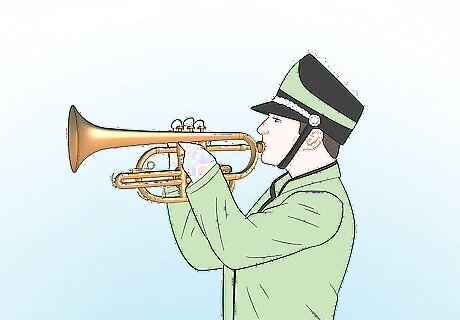
Bring your instrument into playing position. Hold your instrument parallel to the ground, or in uniform with the other instruments in your section. On the count of 1 extend your instrument directly out away from you. On the count of 2, grasp the instrument with your left hand. On the count of 3, bring your instrument into playing position.
Reading a Drill Chart
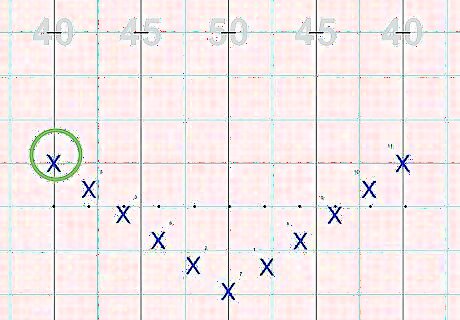
Find your position number. Your starting position on the chart is listed in a coordinate system of horizontal and vertical values. Instead of an X and Y coordinate, this might be listed as a number of steps Left or Right (on either side of the 50 yard line) and a number of steps in front of or behind the hash line that runs parallel to the Visitor-Home sidelines. Drill charts are read from the viewpoint of the director. If the chart says “in front of” it means toward the director. If the chart says “behind” it means away from the director's viewpoint.
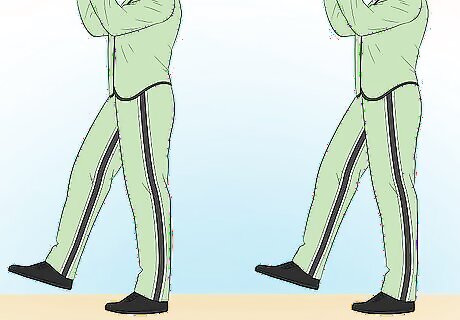
Move in equal sized steps. In order for the marching band to look uniform, it's important that everybody moves about the same distance with each step they take. Drill chart instructions will be listed in steps. The standard marching style is called 8-to-5, which means there are 8 steps for every 5 yards. Since there will be 5-yard lines on a standard football field, it creates a grid marchers can follow, counting 8 steps between each line. You can also think of each step as being an average of 22.5 inches, since there should be 8 steps in 5 yards. This measurement is often used as a standard. More important than knowing the average size of a standard step while you're marching is to be moving at the same pace as those around you.
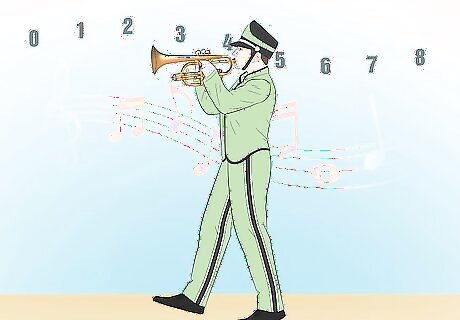
Follow the count. Each position in a drill chart corresponds to a count in the music. As the song progresses, you will move across the field into a new position. You will start on the count of 0 and generally move in increments of 8.
Marching Forwards and Backwards
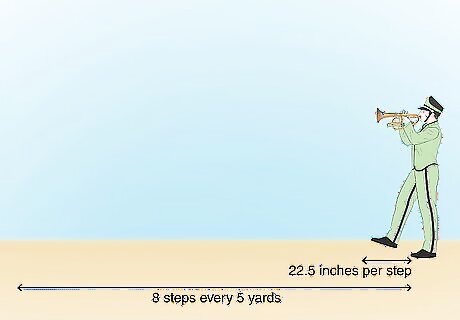
March in an 8-to-5 style. 8-to-5 is the most common marching style. Every step is 22.5 inches. In other words, you will take 8 steps between every 5 yard line. You will start with your left foot and end on your right. Another common style is the 6-to-5 style, which means 6 (30 inch) steps per 5 yards.
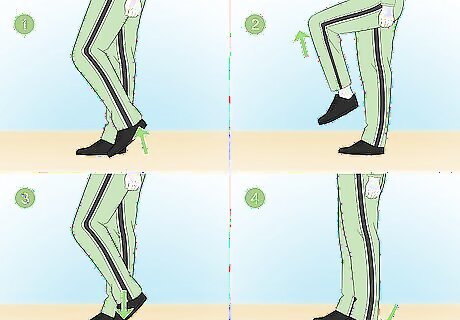
March a chair step. Lift your leg high in the air with your thigh parallel to the ground and your calf vertical to the ground with your toes pointed. Break the step into 4 motions. On the count of 1, lift your left heel off the ground, keeping your toes pointed. On the count of 2, lift your left leg into a chair position, keeping your toes pointed. On the count of 3, drop your left leg so the toe is pointed and the heel is off the ground. On the count of 4, drop your left heel to the ground. Repeat this for your right leg.

March a rolling step. Keep your legs straight while you march. Start by lifting and moving your left foot forward. Plant your heel into the ground first, keeping your foot straight so that your toes point up at an angle and so the bottom of your foot can be seen. Repeat for your right foot. A roll step, also known as a glide step, is a way to march while keeping your instrument level so that it is easier to play.
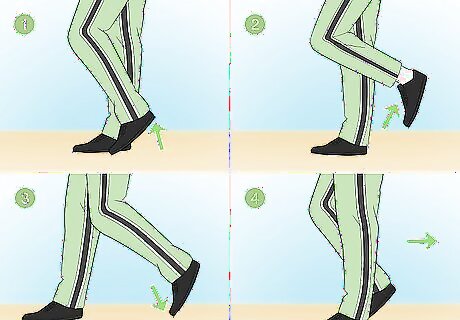
March backwards. To march backwards, use the motions of the chair step. Bring each leg up into a chair position, then thrust the foot backwards. Always stay on the balls of your feet and keep your heels off the ground.
Doing Other Moves
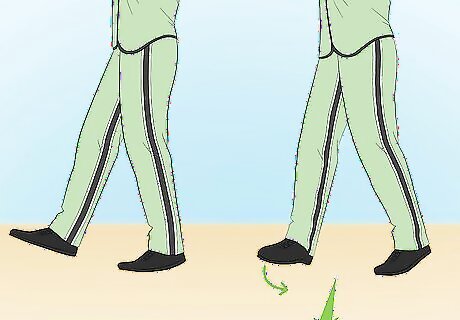
Do a left or right flank. Turn 90 degrees to the left, pivoting on the ball of your right foot. To do a right flank, turn 90 degrees to the right and pivot on your left foot.
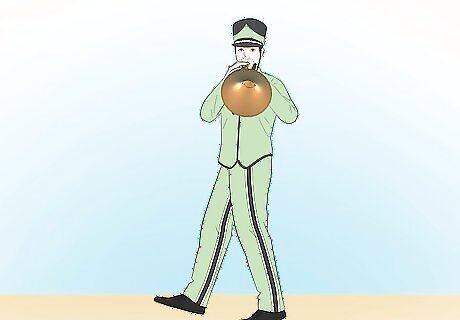
Do a horn slide or a lateral slide. To perform a horn slide, you will only turn the upper half of your body instead of turning on the ball of your foot. Turn the upper half of your body (along with your horn) 90 degrees right or left, while keeping your legs and feet in the same position, marching in the same direction they were before, if you are marching. For a lateral slide, do a left or right flank with the lower half of your body, but keep the upper half of your body facing the same direction as it was before.
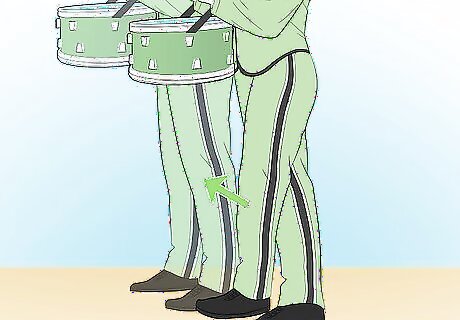
Do a crab step. For percussionists, the crab step will substitute for a slide. To crab step to the left, on the count of 1 sidestep with your left foot over your right, taking about ¾ of a standard sized step. Then sidestep with your right foot, take a slightly larger 1¼ sized step so that you are moving at the same pace as the horn section who is taking standard sized steps each time.
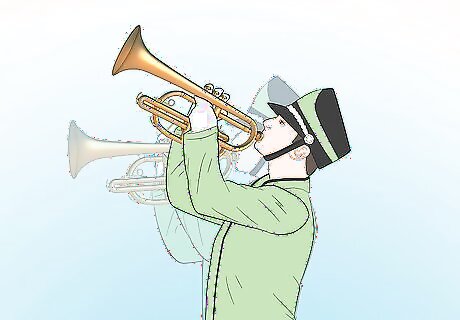
Do a horn flash. Make a sharp up-and-down motion with your head, which will cause the instrument to move up and down. This will accompany turning movements.
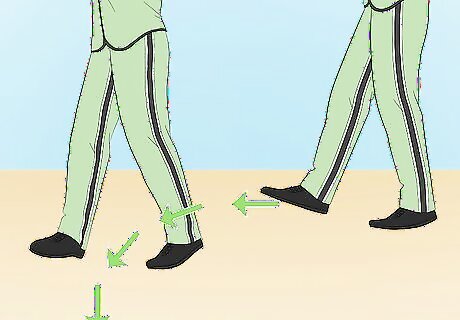
Do a slow turn. Make a 90 degree turn in 4 counts.
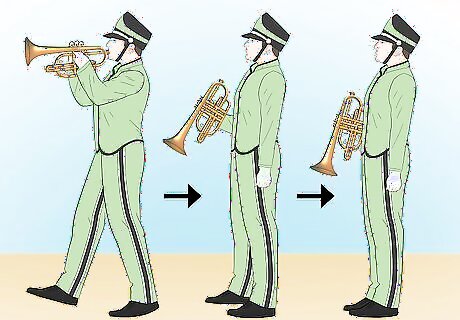
Halt. To halt, bring your feet back to the attention positing, beginning the movement with your right foot and ending on your left foot.


















Comments
0 comment